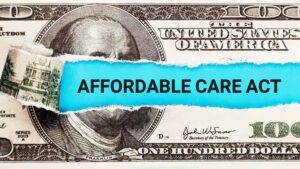

Tax professionals serving Los Angeles County have two significant relief measures to discuss with clients affected by the recent firestorms, following Governor Newsom’s January 16, 2025 executive order.
- Property owners in designated areas now have automatic extensions for property tax payments. Property taxes due April 10, 2025 and December 10, 2025, are now due April 10, 2026.
- For clients who had their property damaged or destroyed, the disaster reassessment program can provide immediate reductions to property tax assessments. While the postponement of payments to April 10, 2026 is good, it’s even better if the amounts due in 2026 are reduced.
Automatic Extension In Designated Zip Codes
The executive order provides blanket relief for property owners in fifteen specific Los Angeles County ZIP codes: 90019, 90041, 90049, 90066, 90265, 90272, 90290, 90402, 91001, 91040, 91104, 91106, 91107, 93535, and 93536. Within these areas, property tax payment deadlines have been extended to April 10, 2026, with no penalties or interest accruing during this period. This extension applies automatically, requiring no application or special filing.
Comment: The April 10, 2026 deadline creates a big financial challenge: property owners will face three property tax installments due simultaneously, coinciding with federal and state tax returns and first quarter estimated tax payments due five days later. This concentration of tax bills will create cash flow problems for many taxpayers. Warn your clients taking advantage of the payment delay.
Tax planning. For business and rental property owners, the property tax delay will impact their 2025 deductions. Evaluate paying the 2024 property taxes December 2025 versus the value of using the money if the payments are delayed until April 2026. For individuals, the 2025 SALT limit is likely to make a 2025 property tax payments worthless. Furthermore, there is some possibility that the SALT limit will be higher with the negotiations around TCJA’s expiration. Paying in 2026 is the best bet for the moment.
The Critical Importance of Disaster Reassessment
While the payment extension offers welcome breathing room, tax professionals should focus particular attention on the disaster reassessment option. This program, operated through the LA County Assessor’s office, can provide immediate and significant tax relief for properties damaged or destroyed by the fires.
The reassessment process temporarily reduces property taxes based on current condition, providing relief from the date of damage until repairs are completed. Property owners must file Form ADS-820 with the County Assessor’s office within 12 months of the damage occurring. This timeline makes it essential for tax professionals to act promptly in identifying affected clients and initiating the reassessment process.
Successful reassessment applications typically include comprehensive documentation of the damage. This should include photographs, insurance claim reports if available, repair estimates, and any official damage assessment reports. The Assessor’s office will review these materials to determine the appropriate level of tax reduction.
Qualifying Damage and Assessment Process
The scope of qualifying damage extends beyond obvious structural fire damage. Properties may qualify for reassessment due to smoke damage to buildings, destruction of landscaping, damage to access roads, and impacts to infrastructure such as utilities or drainage systems. Even properties that appear superficially intact may qualify if they’ve suffered significant smoke damage or infrastructure impacts.
The reassessment process evaluates the property’s current condition and adjusts the tax assessment accordingly. Once repairs are completed, the assessment will return to its normal level. This creates a dynamic situation where tax professionals need to track repair timelines and maintain clear documentation of all changes to the property.
Example. Although not part of the LA fires, my daughter Holly had a house fire. The house had little visible damage from the street, but asbestos clean up meant the house was unlivable for 11 months. The application for reassessment meant that improvements were reduced to zero until inspectors cleared the house for occupancy. It was an easy application process and getting a little thing done was good for Holly.
Practical Guidance for Tax Professionals
Tax practices serving affected clients should begin by identifying clients within the designated ZIP codes. For these clients, reach out proactively to discuss the reassessment option. This outreach should explain both the automatic payment extension and the potential benefits of reassessment.
Consider preparing a simple message for affected clients along these lines: “Your property tax deadline has been automatically extended to April 10, 2026. However, if your property suffered any damage, you may qualify for immediate tax reduction through reassessment. This requires filing Form ADS-820 with the County Assessor’s office. When you are ready, we can discuss tax issues involving disaster losses.”








